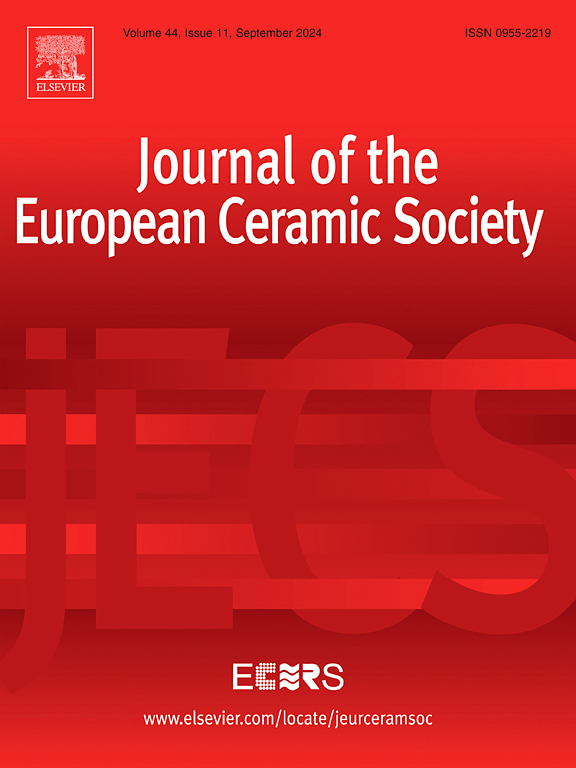High-performance anode-supported microtubular solid oxide fuel cells with an effective cobalt-free Ba0.75Sr0.25Fe0.875Ga0.125O3-δ–Ce0.8Sm0.2O2-δ composite cathode
IF 5.8
2区 材料科学
Q1 MATERIALS SCIENCE, CERAMICS
Journal of The European Ceramic Society
Pub Date : 2025-04-15
DOI:10.1016/j.jeurceramsoc.2025.117467
引用次数: 0
Abstract
In this work, a cobalt-free Ba₀.₇₅Sr₀.₂₅Fe₀.₈₇₅Ga₀.₁₂₅O₃-δ (BSFG) ceramic serves as a cathode for fabricating an anode-supported Ni-Sm₀.₂Ce₀.₈O₂−δ (SDC)|SDC|SDC-BSFG microtubular solid oxide fuel cell (MT-SOFC) via the phase-inversion technique. The average valence of Fe ions is calculated to be 3.201. The δ value of BSFG is found to be 0.410 at 25°C and 0.539 at 650°C. The electrical conductivity increases from 6.0 S/cm at 500°C to 10.6 S/cm at 600°C, then decreases to 6.9 S/cm at 800°C. The SDC layer thickness of the MT-SOFC is approximately 22.7 μm. A considerable decrease in anode concentration polarization is observed when using the Ni-SDC anode, which features finger-shaped microchannels. Polarization resistance accounts for 79.8 % of the total cell resistance at 500°C and 23.2 % at 700°C. The anode-supported MT-SOFCs attains a maximum power density of 1048 mW/cm2 at 650 °C, which is higher than prior MT-SOFCs demonstrated in the literature that have the same electrolyte thicknesses.
求助全文
约1分钟内获得全文
求助全文
来源期刊

Journal of The European Ceramic Society
工程技术-材料科学:硅酸盐
CiteScore
10.70
自引率
12.30%
发文量
863
审稿时长
35 days
期刊介绍:
The Journal of the European Ceramic Society publishes the results of original research and reviews relating to ceramic materials. Papers of either an experimental or theoretical character will be welcomed on a fully international basis. The emphasis is on novel generic science concerning the relationships between processing, microstructure and properties of polycrystalline ceramics consolidated at high temperature. Papers may relate to any of the conventional categories of ceramic: structural, functional, traditional or composite. The central objective is to sustain a high standard of research quality by means of appropriate reviewing procedures.
 求助内容:
求助内容: 应助结果提醒方式:
应助结果提醒方式:


